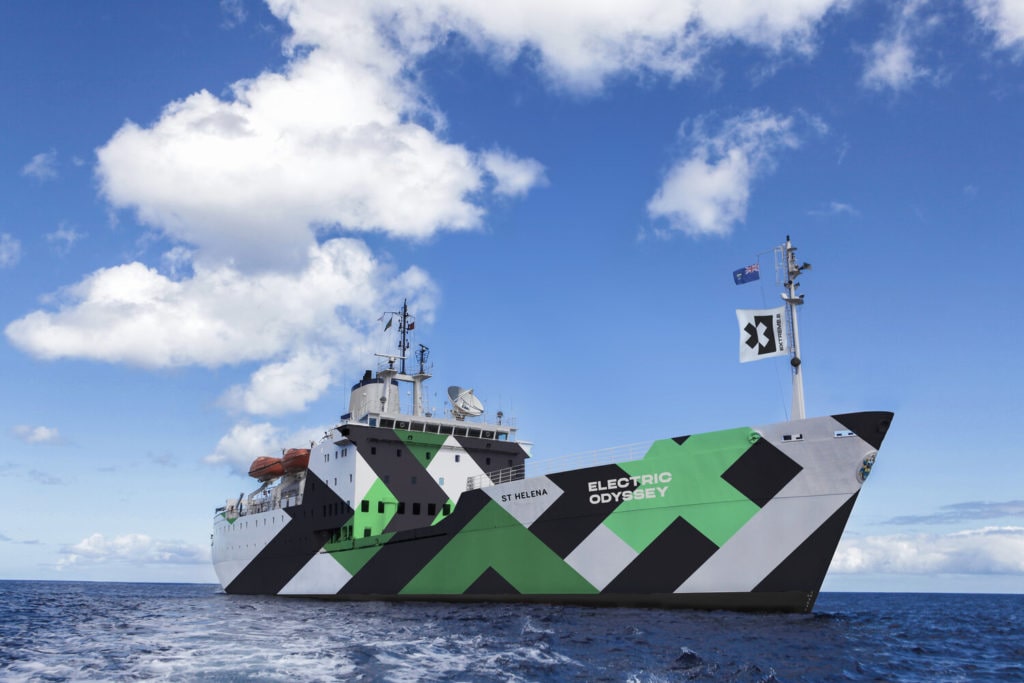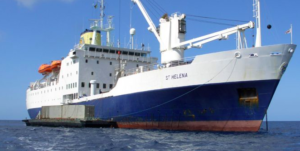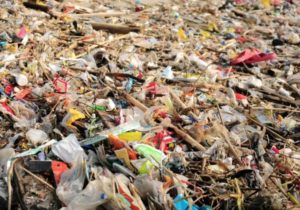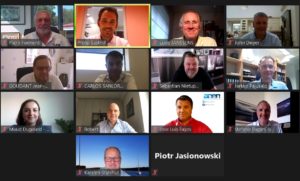RMS St Helena kitted out to support Extreme E as ‘floating paddock’

Last September, six-time Formula One World Champion, Lewis Hamilton announced the creation of his very own race team, X44, which will make its debut in Extreme E, the new electric off-road racing series.
Alongside other competitors (or in front of them), team X44 will race electric vehicles in five remote locations (arctic, desert, rainforest, glacier, and coastal) which are already damaged or severely under threat of climate change from a range of serious issues including melting ice caps, deforestation, desertification and rising sea levels.
The command centre for the championship series will be on board the RMS St Helena, a ship which is undergoing a multi-million Euro transformation to minimise emissions and transform her into the operations, logistics, accommodation and garage base for the championship.
She will be used to transport the championship’s freight and infrastructure, including vehicles, to the nearest port to each of its five race locations. The aim is to minimise Extreme E’s emissions profile, as well as to facilitate scientific research through an on-board laboratory.
 The former Royal Mail cargo-passenger vessel was one of the final two ships to carry the RMS title. She acted as a supply ship and ‘lifeline’, sailing between Cape Town and the remote British Overseas Territory of Saint Helena – a volcanic tropical island in the South Atlantic Ocean – between 1990 and 2018.
The former Royal Mail cargo-passenger vessel was one of the final two ships to carry the RMS title. She acted as a supply ship and ‘lifeline’, sailing between Cape Town and the remote British Overseas Territory of Saint Helena – a volcanic tropical island in the South Atlantic Ocean – between 1990 and 2018.
One of the main features unique to Extreme E is the remote race locations spanning four continents.
“Obviously we have to get there and minimise our footprint at the same time,” founder and electric racing pioneer Alejandro Agag told Alt Drive. “One of the complications is that some of the places we’re going to don’t have a normal traditional shipping port or a logistics infrastructure that we normally have in a city. So, we had to think, how do we actually get our kit there?”
The decision to travel via ship provided the most logical cost-effective solution. The RMS St Helena has a history of carrying heavy load and can carry unloading equipment such as cranes. The equipment can then either be unloaded onto a nearby pontoon or directly onto a dock alongside the race location. “For example, in Kangerlussuaq in Greenland, we can actually get right up to the bay we want to go to and unload the ship directly there,” says Agag.
“We have the least overland transit to get to where our race location will be, which is very close to that place. If we were shipping on normal container ships, we’d have to go to the nearest container port and then transport everything by road,” he says.
As a 30-year-old vessel, the priority has been to give the RMS St Helena a phased modernisation and refit programme in order to lower emissions as much as possible, with the first phase completed ahead of Extreme E’s first campaign.
For Phase 1, RMS St Helena’s engines and generators have been fully refurbished and converted, allowing the ship to run on low-sulphur marine diesel. Extreme E says a complete rebuild of both the ship’s engines and generators has been carried out and all the ship’s mechanical systems have been overhauled and improved where necessary.
The shafts and propellers were completely refurbished, while air-into-water-stream technologies (to lower the water consumption and water heating requirements of the ship) are also planned.
In a decision to minimise waste, the ship’s 30-year-old interior has all been kept but has undergone an upcycling process to improve its aesthetics and liveability whilst being as eco-friendly as possible.
“Extreme E really appealed to me because of its environmental focus,” Hamilton says. “Every single one of us has the power to make a difference, and it means so much to me that I can use my love of racing, together with my love for our planet, to have a positive impact.”
The single-design electric vehicle driven by X44, and all other competitors, is at the cutting edge of innovation for electric vehicles, and through them Extreme E hopes to develop tech which will find its way into everyday use, paving the way for a less carbon intensive future.
According to Alt Drive, the championship is also planning on using the ship as a potential venue to host seminars and conferences. The championship is set to begin its inaugural season in January 2021 where the RMS St Helena will begin her new chapter by setting sail for the first race in Lac Rose in Senegal.










